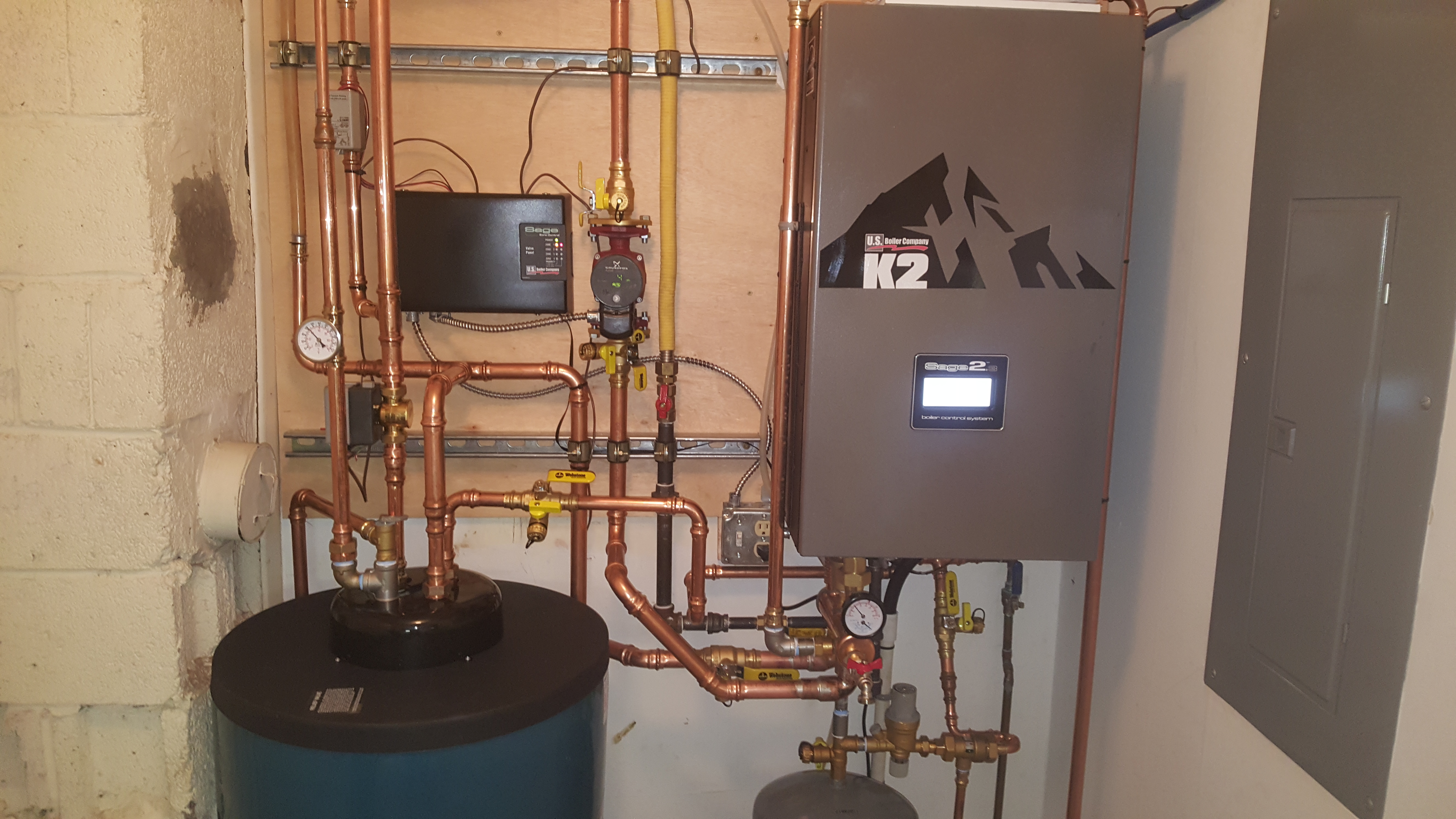Spring Has Sprung
It’s time to be proactive about boiler replacements.

As nature turns green, pollen bombards our sinuses and tax returns are flowing in, it’s time to focus on boiler replacements. Cooling season hasn’t quite kicked off yet, and most heating systems are running very short hours, if at all.
This is the perfect opportunity to contact those home and business owners with old, inefficient heating systems. After all, the big winter fuel bills are still fresh in their memories. That goes double for customers who needed emergency service over the winter. These customers are low-hanging fruit; by next January, they’ll be glad you called them in April.
Spring and summer are the absolute best time of year to conduct boiler replacements. Demand on hydronic systems is much lower, usually only requiring domestic hot water (DHW). When DHW is needed, we temporarily install an electric water heater while the system is being replaced. This buys us the time to install a high-quality system with the least disruption.
With rising fuel prices — wait, who am I kidding, with rising everything prices — condensing boilers are as attractive now as ever, and the technology has only gotten better.
We always lead with high-efficiency equipment, and we can be competitive with that premium option for two main reasons: we prefabricate a large portion of our boiler installations, and we’ve standardized on one or two boiler models. The familiarity with the product that we’ve gained allows us to be very efficient with our time.
Past and Future
There are several things to keep in mind when selling a boiler, especially now. It’s unwise to assume that the existing boiler is the correct capacity for the home. The boiler was likely oversized when it was installed. This is less true than 15 years ago, but it’s still a serious consideration.
Beyond that, many customers improved their homes over the past two years. Insulation may have been added to the attic, windows and doors may have been upgraded, etc., reducing the heat load of the structure.
A proper, room-by-room Manual J heat load calculation must be conducted in order to give the homeowner the best value, performance and longevity possible for the money you’re proposing they spend with your company. If the system is steam heat, the proper method of sizing the boiler is by using an equivalence of direct radiation calculation.
It’s possible that the heat load of the home has gone up. Instead of replacing windows and doors, many homeowners made additions to their properties in recent years. Again, conducting a Manual J load calculation is necessary, but you also need to ask about any changes.
Have any additions been made, or will any be made in the near future? Any planned changes impacting the load on the hydronic system will be serious factors to consider, whether that be a floor plan expansion or a bathroom remodel to raise the volume of DHW needed.
And if any renovations are to take place, will they add radiant heating, such as in the kitchen or bathroom? Finally, if they plan to add or replace patios, walks or driveway slabs, is snowmelt to be included?
The beauty of a hydronic system is that one boiler system can handle any number of future additions. However, those changes must be accounted for so that the boiler can be sized and piping designed to facilitate those additions.
High-efficiency Changes
Another thing we always ask is whether the existing comfort level is sufficient. If the system is unresponsive or some rooms are too warm or too cool, zoning or balancing improvements should certainly be part of the retrofit.
Fuel source is a big consideration, too. If high efficiency is the goal, a good salesperson will discuss and explain the customer’s options. Is natural gas available at the property? If not, does the customer understand and accept that an LP tank must be installed?
Changing from conventional equipment to condensing equipment also means a venting change is likely. Can the chimney be lined? If not, does the customer understand that the most effective way to vent the new boiler will be through a sidewall vent? And that the new venting must remain unobstructed by shrubbery, etc.?
These talking points may come across as negative attributes, but take the opportunity to reinforce the advantages of high-efficiency systems. Fuel will be saved, as will floor space in the mechanical room. The unit will be quieter; if the previous system was oil-fired, the new one will be cleaner and won’t generate a fuel-oil odor. Plus, the customer can finally ditch the old oil tank.
If you didn’t lead your sales call with the potential for rebates on high-efficiency equipment, use it as the coup de grace. Most boiler manufacturers provide a rebate finder, allowing you or the homeowner to enter a zip code to discover rebates available for specific boiler models. This often includes local, state and federal incentives. Obviously, use these to your advantage and the customer’s.
One additional consideration
Water quality is important for efficiency and extending the working life of a boiler. Well water can be notoriously harsh or hard in rural areas. Increased use of road salt, fertilizers, etc., has raised the salt and chloride levels in groundwater.
Even utility water quality has fallen. This is truer in some places than others. Chlorine, fluorides and other chemicals are added to municipal water to ensure safe (potable) consumption. These chemicals can potentially cause corrosion or scale accumulation inside a boiler. The same can occur inside water heaters of all varieties.
Take a water sample while you’re at the customer’s home. The results will help you determine the indirect-fired water heater you should install. Stainless-steel tanks, though more costly, provide better corrosion resistance than standard tanks, and stone- or plastic-lined tanks are even better.
If the water is particularly aggressive, it’s advisable to install a tank such as the Alliance, made by U.S. Boiler Co. It’s stone-lined, and the heat exchanger can be removed from the top of the tank and cleaned or replaced without draining the tank. In this situation, I’d make note to check the coil when we return to service the system.
In a worst-case water scenario, where the water is extremely corrosive or scale-laden, we inject the system with a chemical such as Fernox FI Inhibitor. We may even install a glycol feeder (sans glycol) to ensure that the boiler feed valve never draws water from the house supply. If it were that bad, we’d also conduct the initial system fill with quality water from off-site.
Testing your customer’s water is a step your competition likely won’t take, and if you don’t have a signed contract by the time the test results return, it gives you a great reason to reach back out to the customer. It also could lead to the sale of a point-of-use or whole-house water treatment system.
Make use of the spring shoulder season. Give your technicians some rest after a busy heating season and before the cooling season kicks off, but keep your foot on the throttle. With economic uncertainty, there’s wisdom in making hay while the sun is shining. Springtime boiler replacements can yield a lot of hay while also doing a great service to your existing customers and expanding your customer base.





